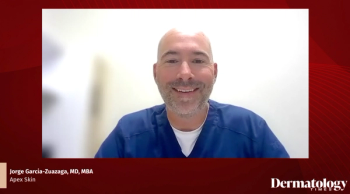
How to analyze your practice
Taking the time to analyze and benchmark your practice can help you both position it for sale and find the right buyer.
Todd is the Chief Executive Officer of VitalSkin Dermatology, a world-class dermatology and aesthetics practice management firm., Mr. Petersen has over two decades of C-suite experience, including CEO, COO, CFO, and CHRO roles. He is a growth expert with a passion for new entrepreneurial challenges, revenue growth, improving operations, and building teams and partnerships.
In previous articles, we discussed why so many physicians are selling their practices. Specifically, we addressed continuing to run and grow your practice, preparing early, assembling a team of experts and understanding the difference between a capital and asset sale. The next step in selling your practice is to analyze and benchmark your practice.
Taking the time to analyze and benchmark your practice can help you both position it for sale and find the right buyer. To put your practice in the best light, you need to have a clear understanding of its strengths and opportunities, and how you can leverage your practice's strengths to take advantage of your opportunities.
Even if you elect not to proceed with a sale, going through this process will have a profound impact on your business moving forward. That’s because you’ll not only have a better understanding of your competitive advantage and how it’s derived, you’ll also have a roadmap for your strategic plan.
To analyze and benchmark your practice, start by collecting as much data as possible. Possible sources include:
- Reviewing and analyzing websites where patients leave reviews
- Analyzing payor contracts
- Evaluating your referral sources
- Defining the services your practice provides
- Assessing the quality and tenure of your team
- Establishing and reviewing the clinical and operational processes used in your office
- Distinguishing your addressable market and practice demographics
- Identifying competitive locations, services, and market position as it relates to your practice
- Reviewing your financial statements, available services, source of patients, etc.
When you’ve completed gathering data sources, it's time to analyze the data. One of the best tools to do that is a SWOT analysis.
SWOT Analysis
A SWOT analysis is one of the most popular and widely used organizational planning tools. Its popularity comes from its ease of use and the profound insights it can generate. SWOT stands for strengths, weaknesses, opportunities and threats. The strengths and weaknesses are internally focused, and come from a thorough analysis of your practice. The opportunities and threats are externally focused, and come from an in-depth analysis of your practice's external environment. When conducting a SWOT analysis, it’s easy to lose objectivity, especially when considering the strengths and weaknesses of your practice.
For many, our self-identity is tied to our work and the business we work so hard to build. As such, it’s often difficult to be critical of ourselves and our creation. However, it's essential to recognize this and let the data guide us to conclusions.
Strengths and Weaknesses
A practice's strengths and weaknesses are derived by analyzing its resources. Resources are broken down into tangible assets, intangible assets, and organizational capabilities.
Tangible assets are assets that are material in nature and recorded on your practice's balance sheet. They may include your real estate, practice, equipment, and working capital.
- Strengths and weaknesses from tangible assets include the location of your practice, the aesthetic of your office, technology or equipment, the strength of your balance sheet, etc. For example, your practice may be located in a part of town that gives you access to a middle-aged, affluent patient population. You might have limited or no competition, have the only CoolSculpting technology, and employ the only Mohs surgeon within twenty miles. However, your practice is on a busy street, not easily accessible, and is not particularly attractive.
Intangible assets are resources that lack physical substance and are challenging to measure and evaluate, but they are often your most valuable possessions.
- Strengths and weaknesses from intangible assets may come from your practice's reputation, your brand equity, unique skills or services you offer in your market, the quality and tenure of your team, etc. For example, your team has been together for ten years and have all gone through extensive customer service training. You are the only dermatologist in the area with extensive training with fillers, and your Mohs surgeon has built up an excellent reputation with the primary care physicians in the surrounding market. However, your branding is outdated, and your team lacks the training to successfully create a treatment plan and convert patients to your most profitable services.
Organizational capabilities are the complex combination of assets, people and processes that are used to deliver exceptional service to your patients. These capabilities are built over an extended period of time, and it's difficult for competitors to replicate. For example, your practice has a highly skilled Mohs surgeon, and a successful patient referral manager that has built up excellent relationships with the largest primary care groups in the area, adheres to running efficient workflows and offers superior service to your patients. Your marketing team regularly works with your Mohs surgeon to conduct lunch-and-learns with community organizations and hosts online webinars to continue generating patient flow. It's the combination of all these skilled people and processes that provide for a competitive advantage.
Conversely, a year ago you made the decision to expand into cosmetic dermatology. You’ve acquired some high-priced assets. However, you’re still developing your skills, training your team, and working out processes in the office to create an efficient workflow. You’re also still building key provider referral relationships, and trying to secure marketing talent to build your brand and generate more awareness of the service.
Opportunities and Threats
To assess your practice opportunities and threats, I suggest using Michael Porter's Five Forces Model to analyze your external market.
Five Forces Model
Michael Porter, a well-regarded professor at Harvard Business School, developed a framework to help businesses analyze their external market. His model suggests the degree of rivalry in an industry is largely influenced by the threat of new entrants, substitutes, buyers, and suppliers. By analyzing these four threats and then evaluating the degree of rivalry, a management team can identify opportunities and threats facing the industry.
Here are some questions you might consider as you analyze each of these forces.
The threat of new entrants
Is your market underserved? How strong is your brand equity and that of your competitors? Does government regulation limit the number of new entrants? How easy is it for new entrants to obtain access to patients and payors? What are the switching costs for patients? What are the capital requirements to enter a new market?
The threat of substitutes
Is there an emergence of new substitutes (for example, Walgreen’s new telehealth services for dermatology)? Are patients or payors willing to substitute (do they consider the use of primary care)? What are the switching costs for patients? Do substitutes perform better, or are they cheaper?
Bargaining Power of Customers
Is there a concentration of commercial payors in your market? What kind of power are payors exhibiting at the bargaining table?
- How important is your patient base to payors? Are payors, like United Healthcare, backwardly integrating into your market? How big is the potential patient population? Is there a shift in the services patients are demanding? Are there new technologies patients are using? What are patients saying about your practice and your competitors' practices? How price-sensitive are patients?
Bargaining Power of Suppliers
Is there a concentration of key suppliers for hospital services, supplies, equipment, etc.? What kind of power are payors exhibiting at the bargaining table? Are any suppliers, like local hospitals, that are forward integrating?
- How important is your volume to suppliers? Has there been a surge or decline in the demand for certain supplies and equipment (think PPE)? Has there been an emergence of substitute supplies or equipment? Will changes in technology change suppliers?
The results of your analysis from the previous four threats will help inform your review of the degree of rivalry. Also, consider these additional questions. Is the market for dermatology services growing or shrinking? Is industry consolidation impacting your market? How concentrated and balanced is the competitive landscape?
- Is the market oversupplied or undersupplied with dermatologists? What is the wait time for a new patient to get a dermatology appointment?
Survey Your Environment
Surveying your macro environment is another crucial step in understanding how shifts in this environment will create opportunities and threats for your practice. You can break down the analysis into these eight domains: patients and payors, technology, government regulation and policy, economy, suppliers, cultural values and societal changes, employees, and competitors.
Here are some questions for each one of these domains to help guide your analysis.
Patients and payors
How will the dramatic decline in patients with commercial insurance impact your practice?
- Your patients that once had commercial insurance and now have no insurance or are on Medicaid - will you continue to treat them? With an aging population, what services are going to be in demand? What challenges do payors in your market face? What products are payors in your market emphasizing?
Technology
How will artificial intelligence transform the industry? How will software as a solution (SaaS) and the continued move toward digital offices impact your practice? What new social media solutions or what changes to existing platforms are coming? How will telemedicine transform health care and your practice?
Government regulation and policy
With so many people displaced from their employer-sponsored health insurance-and many Democrats calling for improved health insurance access and Medicare for all-how will your practice and patient base be impacted? On the one hand, it may negatively affect your per-unit reimbursement, and on the other hand, it may increase your access to patients by twenty percent. How will your practice be affected by changes in regulation surrounding the corporate practice of medicine, and by advanced practice providers?
Economy
How will the pandemic, low-interest rates, high unemployment, and the drop in the securities market affect your practice? With the increase in Medicaid roles and unemployment claims, how will that impact state government finances? What are the long-term implications of so much government debt? How will the state and federal fiscal policy change?
Suppliers
How will Amazon affect medical suppliers? Who are the new practice management and electronic medical record suppliers, and how will their solutions affect practices and customers? How will the shortage of PPE impact your practice?
Cultural Values and Societal Changes
How is social media transforming the industry? How will the continued urbanization of the US impact your practice? As the social stigma around cosmetic procedures continues to decrease, how will that affect your patients' demand for services?
Employees
What is your access to well-trained employees? How much does it cost to attract well-trained employees? What are the most sought-after employee benefits? How much do those benefits cost? How are millennials reshaping the workforce, and in what ways will that impact you?
Competitors
Who are your competitors, and what are their strengths and weaknesses? How are they positioned in the market? What are their customer reviews saying about them? What services do they provide? Where are they located? Also, pay special attention to emerging competitors like Walgreens' telemedicine offering in dermatology.
Completing a comprehensive SWOT analysis takes time, but the investment is well worth it. Next month we’ll take a look at developing a financial pro forma as the next step in preparing to sell your practice.
Newsletter
Like what you’re reading? Subscribe to Dermatology Times for weekly updates on therapies, innovations, and real-world practice tips.

















